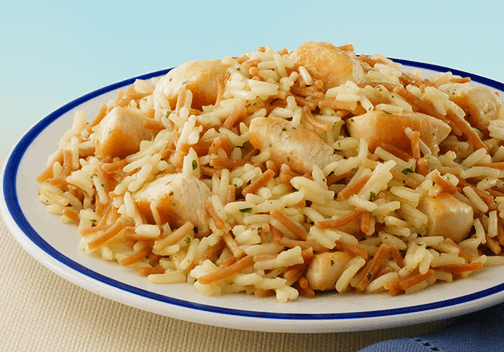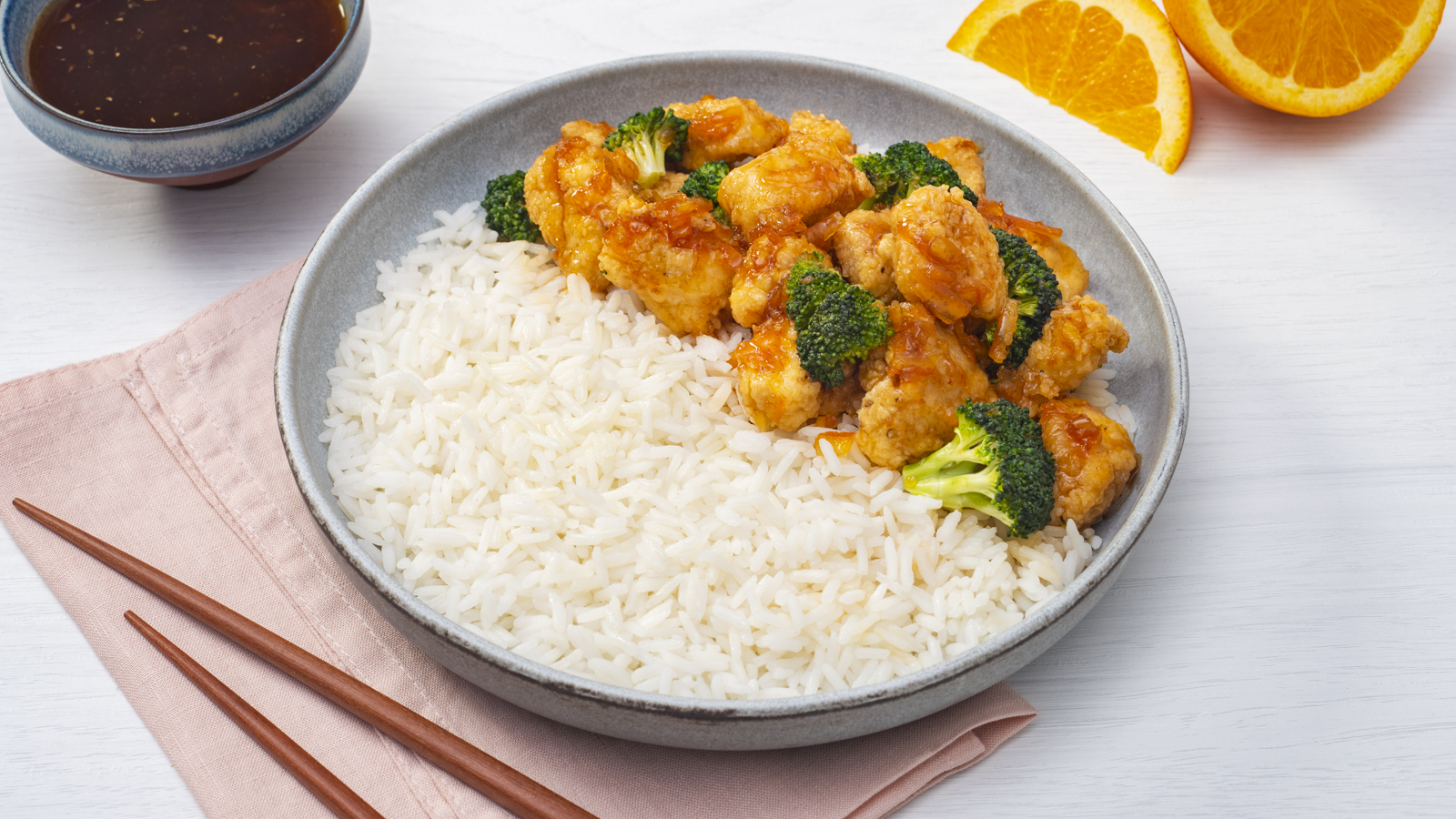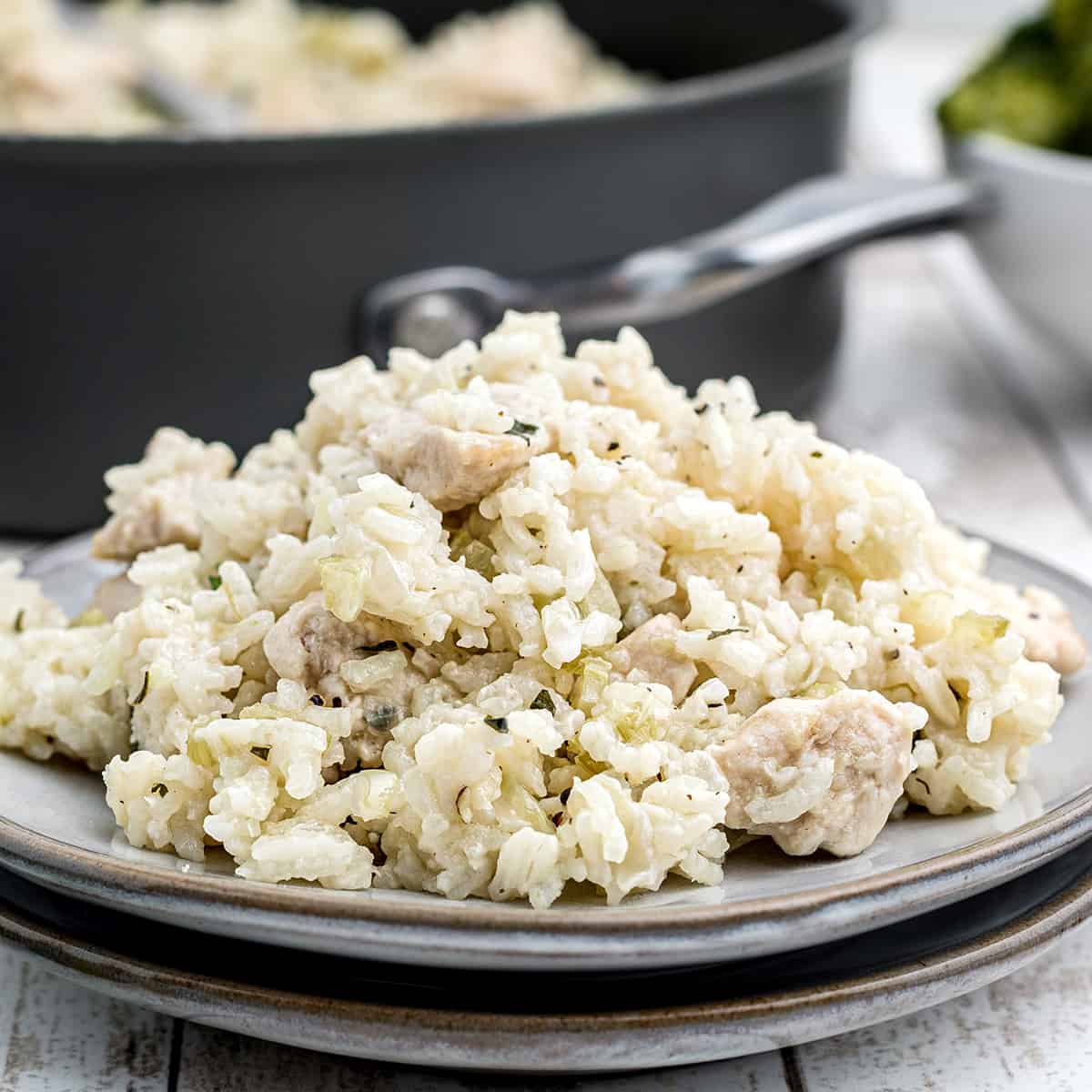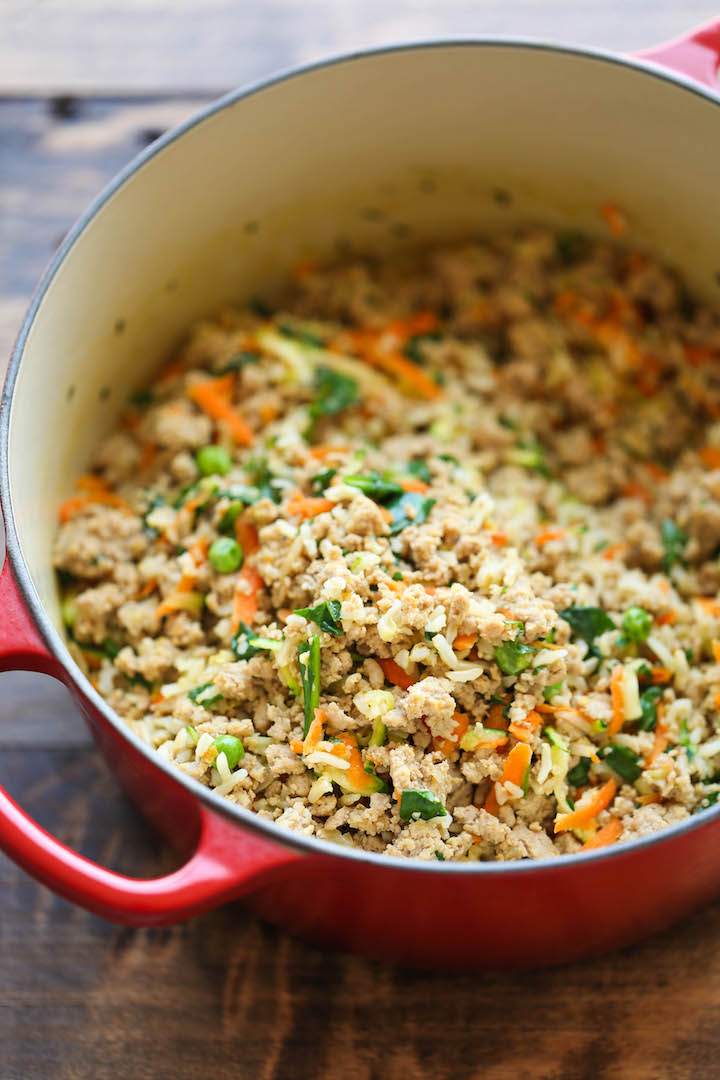Topic rice with chinese sausage: Explore the delightful fusion of flavors with "Rice with Chinese Sausage," a culinary gem that marries the aromatic allure of traditional ingredients with contemporary cooking techniques.
Table of Content
- Classic Rice Cooker Chinese Sausage Rice
- Chinese Sausage Fried Rice
- Sticky Rice with Chinese Sausage
- Instant Pot Chinese Sausage Rice
- Nutritional Information
- Serving Suggestions
- Chinese Sausage Fried Rice
- Sticky Rice with Chinese Sausage
- How do you make rice with Chinese sausage on the stove?
- Instant Pot Chinese Sausage Rice
- YOUTUBE: The Fried Rice I Ate Growing Up - Chinese Sausage & Egg Fried Rice - Marion\'s Kitchen
- Nutritional Information
- Serving Suggestions
- Sticky Rice with Chinese Sausage
- Instant Pot Chinese Sausage Rice
- Nutritional Information
- Serving Suggestions
- Instant Pot Chinese Sausage Rice
- Nutritional Information
- Serving Suggestions
- Nutritional Information
- Serving Suggestions
- Serving Suggestions
- Introduction to Chinese Sausage
- Health Benefits and Nutritional Info
- Traditional Rice with Chinese Sausage Recipes
- Variations and Modern Twists
- Choosing the Right Chinese Sausage
- Cooking Tips for Perfect Rice
- Pairing Suggestions and Serving Ideas
- Storing and Preserving Chinese Sausage
- Expert Tips for First-Timers
- Cultural Significance and History
- Where to Buy Quality Chinese Sausage
- User Reviews and Recommendations
Classic Rice Cooker Chinese Sausage Rice
This simple, yet delicious recipe involves rinsing rice and laying Chinese sausage links on top before cooking. It\"s an easy way to infuse the rice with the rich flavors of the sausage.
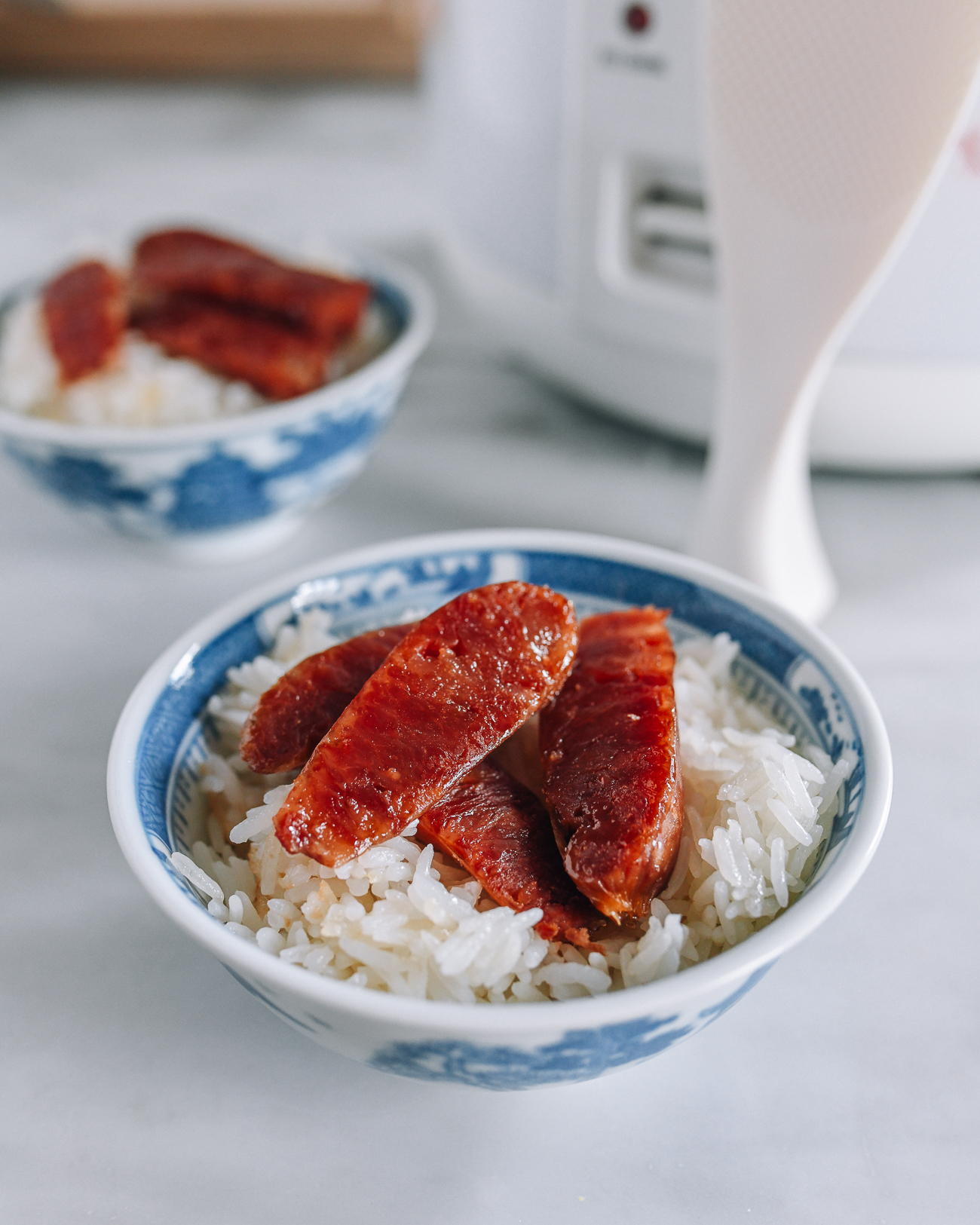
READ MORE:
Chinese Sausage Fried Rice
A quick and flavorful dish, this recipe calls for stir-frying diced Chinese sausage with onions, ginger, and scallions, before adding rice and additional seasoning for a complete meal.
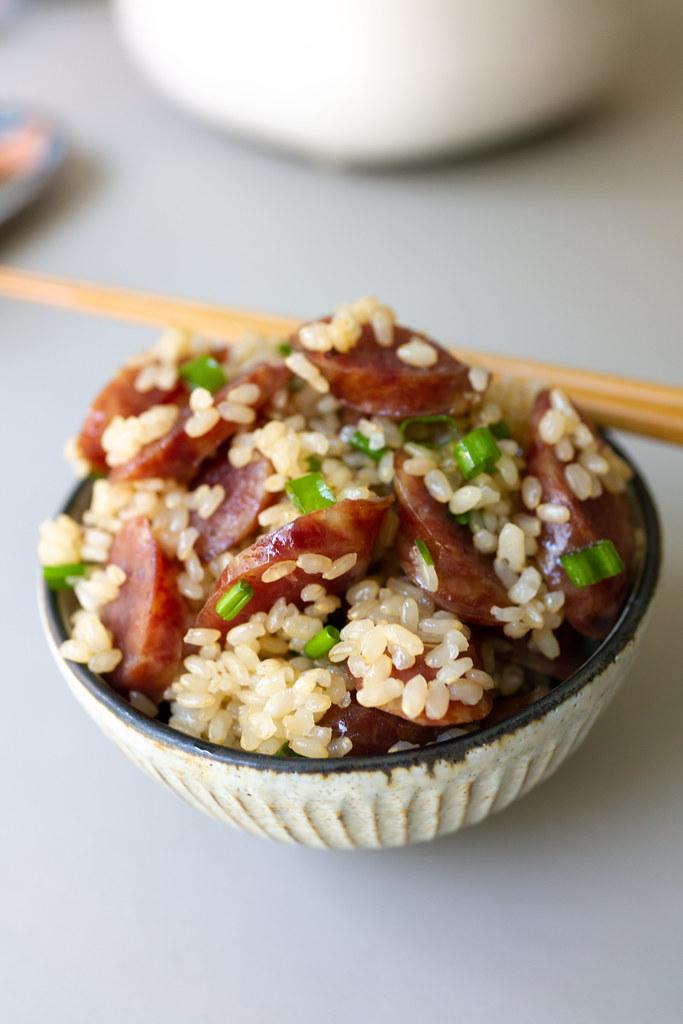
Sticky Rice with Chinese Sausage
Combine the savory taste of Chinese sausage with sticky rice, mushrooms, and shrimp for a richly flavored dish. This recipe includes steaming the rice and stir-frying with the sausage and other ingredients.
Instant Pot Chinese Sausage Rice
Utilize the convenience of an Instant Pot to prepare this dish, mixing rice with Chinese sausage, mushrooms, and a variety of sauces for a deeply flavored and satisfying meal.
Ingredients Overview
- Rice (Jasmine or sticky rice)
- Chinese sausage (Lap Cheong)
- Onion, ginger, and scallions
- Shiitake mushrooms and dried shrimp (for certain recipes)
- Soy sauce, oyster sauce, and Shaoxing wine for seasoning
Cooking Tips
- Rinse the rice thoroughly before cooking to remove excess starch.
- For a softer texture, steam or boil the Chinese sausage before adding it to the dish.
- When using a rice cooker or Instant Pot, layer the ingredients properly to ensure even cooking.
- Adjust seasoning according to taste preferences, adding more soy sauce or salt as needed.
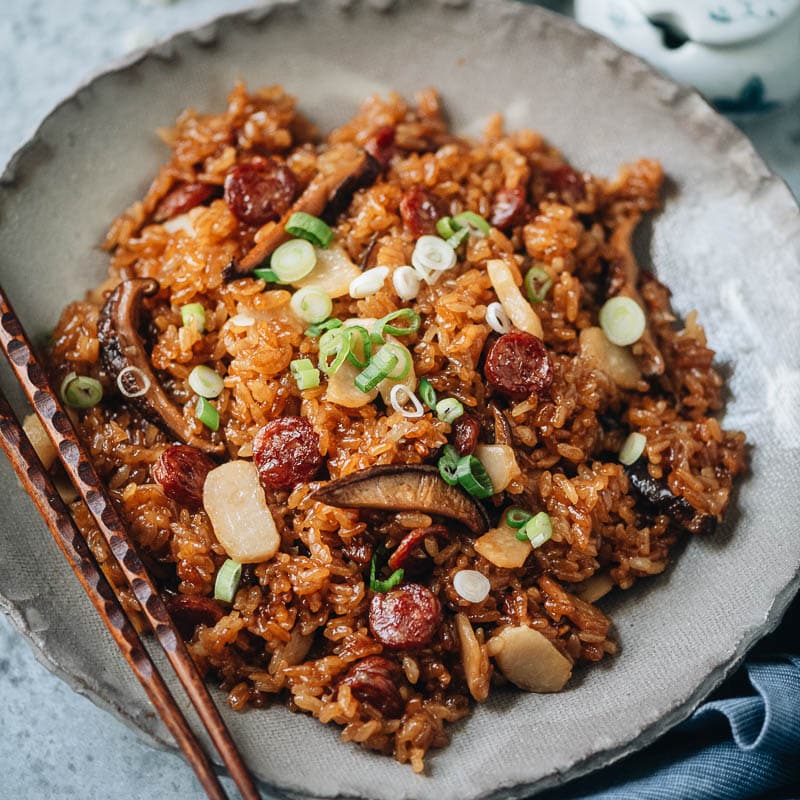
Nutritional Information
Chinese sausage is known for its high flavor content, adding a rich taste to the rice. However, it\"s also high in fat and sodium, so consider balancing your meal with vegetables or lighter sides.
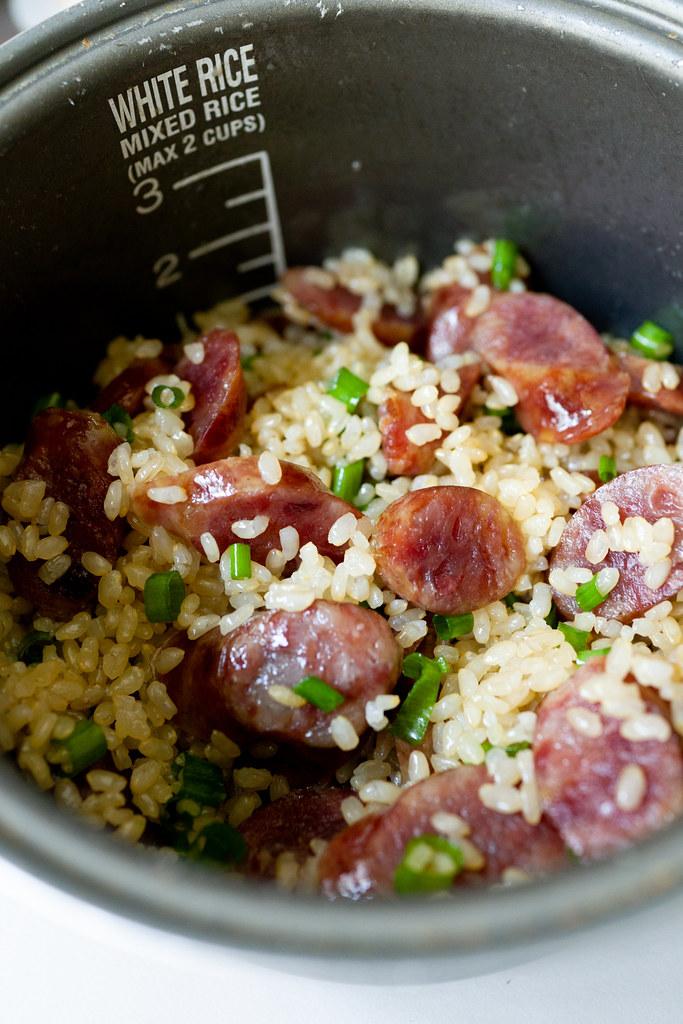
_HOOK_
Serving Suggestions
Pair rice with Chinese sausage with a side of steamed vegetables or a light soup to create a balanced and satisfying meal. Garnish with sliced green onions or sesame seeds for an extra touch of flavor.
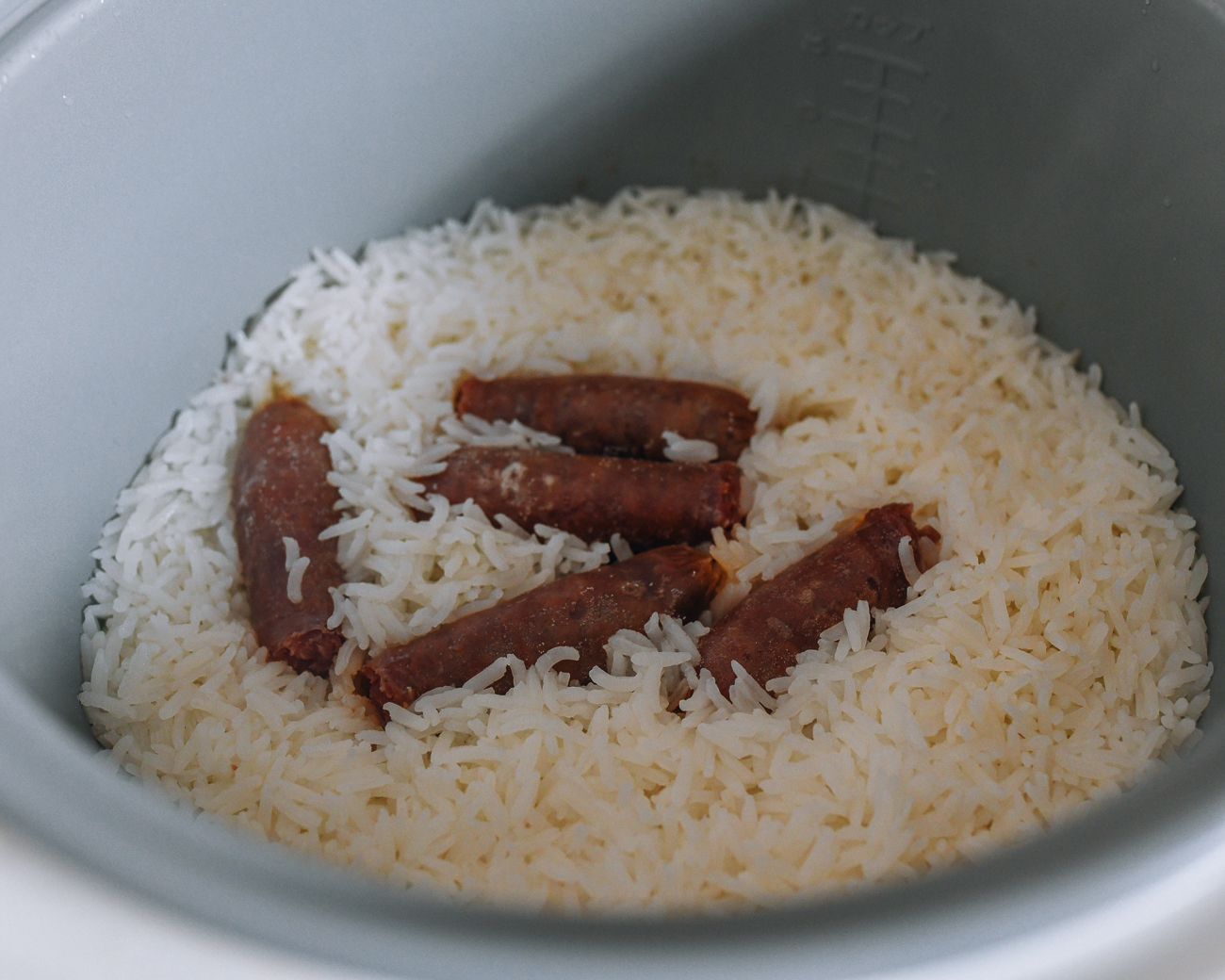
Chinese Sausage Fried Rice
A quick and flavorful dish, this recipe calls for stir-frying diced Chinese sausage with onions, ginger, and scallions, before adding rice and additional seasoning for a complete meal.

Sticky Rice with Chinese Sausage
Combine the savory taste of Chinese sausage with sticky rice, mushrooms, and shrimp for a richly flavored dish. This recipe includes steaming the rice and stir-frying with the sausage and other ingredients.
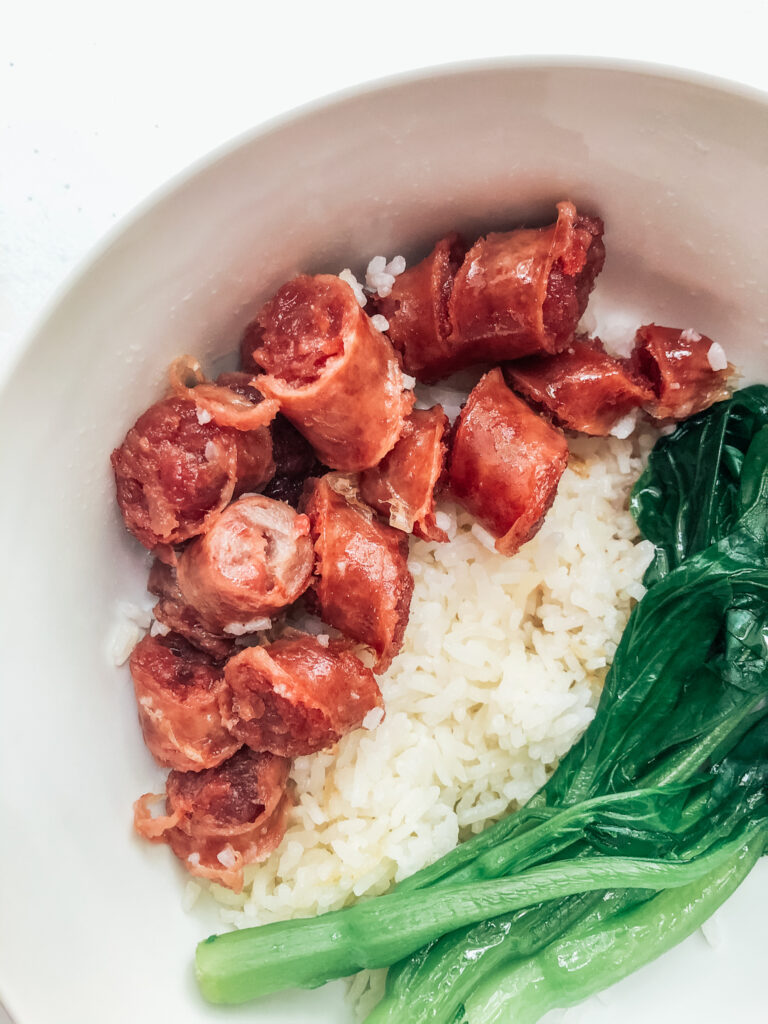
How do you make rice with Chinese sausage on the stove?
To make rice with Chinese sausage on the stove, follow these steps:
- Rinse the rice in a colander until the water runs clear.
- Soak the rice in water for about 20-30 minutes.
- Slice the Chinese sausages into desired thickness.
- In a pot, add the soaked rice and water in a 1:1 ratio.
- Place the sliced Chinese sausages on top of the rice.
- Cover the pot with a lid and bring to a boil over high heat.
- Once boiling, reduce the heat to low and simmer for about 15-20 minutes, or until the rice is cooked and the sausages are heated through.
- Fluff the rice with a fork and mix in the Chinese sausages before serving.
Instant Pot Chinese Sausage Rice
Utilize the convenience of an Instant Pot to prepare this dish, mixing rice with Chinese sausage, mushrooms, and a variety of sauces for a deeply flavored and satisfying meal.
Ingredients Overview
- Rice (Jasmine or sticky rice)
- Chinese sausage (Lap Cheong)
- Onion, ginger, and scallions
- Shiitake mushrooms and dried shrimp (for certain recipes)
- Soy sauce, oyster sauce, and Shaoxing wine for seasoning
Cooking Tips
- Rinse the rice thoroughly before cooking to remove excess starch.
- For a softer texture, steam or boil the Chinese sausage before adding it to the dish.
- When using a rice cooker or Instant Pot, layer the ingredients properly to ensure even cooking.
- Adjust seasoning according to taste preferences, adding more soy sauce or salt as needed.
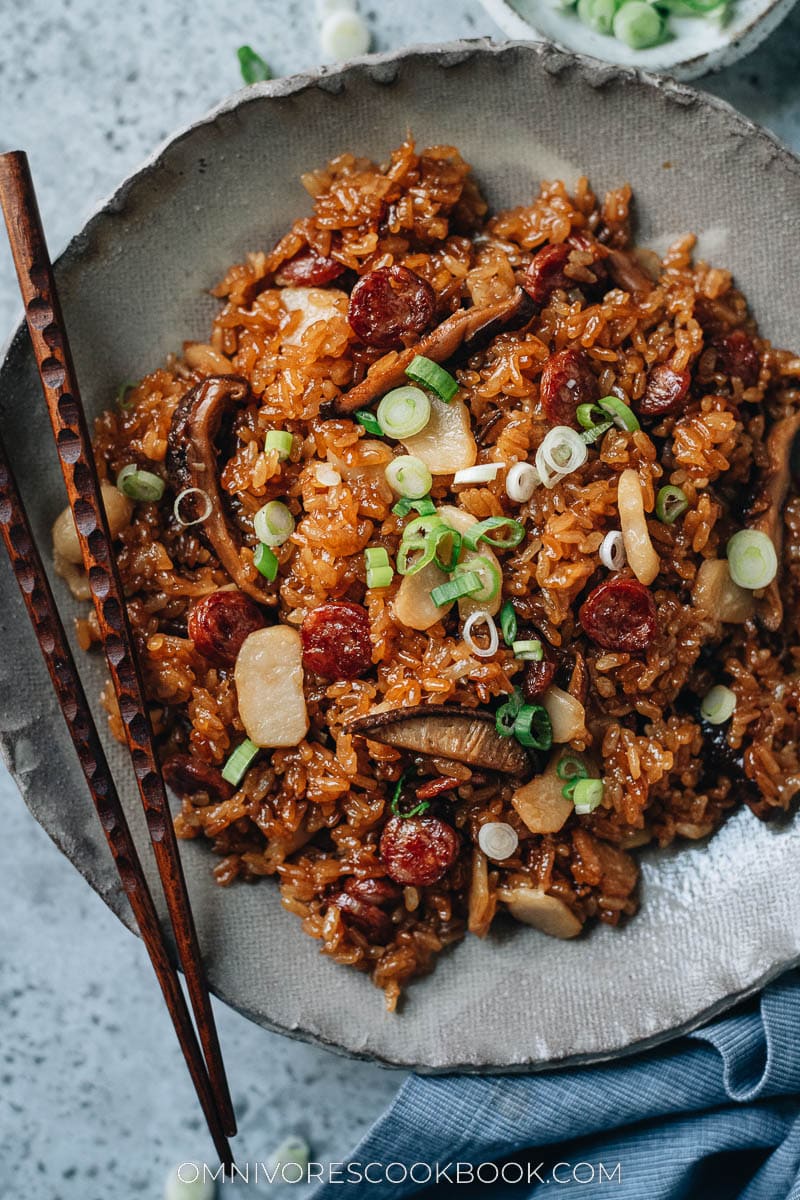
_HOOK_
The Fried Rice I Ate Growing Up - Chinese Sausage & Egg Fried Rice - Marion\'s Kitchen
Childhood: \"Relive the joy and innocence of childhood with this heartwarming video filled with nostalgic moments, laughter, and fun surprises. Watch as we take a trip down memory lane together!\" Recipe: \"Get ready to tantalize your taste buds with our mouthwatering recipe video! From sizzling sauces to delectable desserts, join us as we unlock the secrets to creating culinary delights at home.\"
Lap Cheong Fried Rice | Fried Rice With Chinese Sausage And Egg Recipe
This video recipe will show you how to make fried rice with chinese sausage and egg, otherwise known as lap cheong fried rice or ...
Nutritional Information
Chinese sausage is known for its high flavor content, adding a rich taste to the rice. However, it\"s also high in fat and sodium, so consider balancing your meal with vegetables or lighter sides.
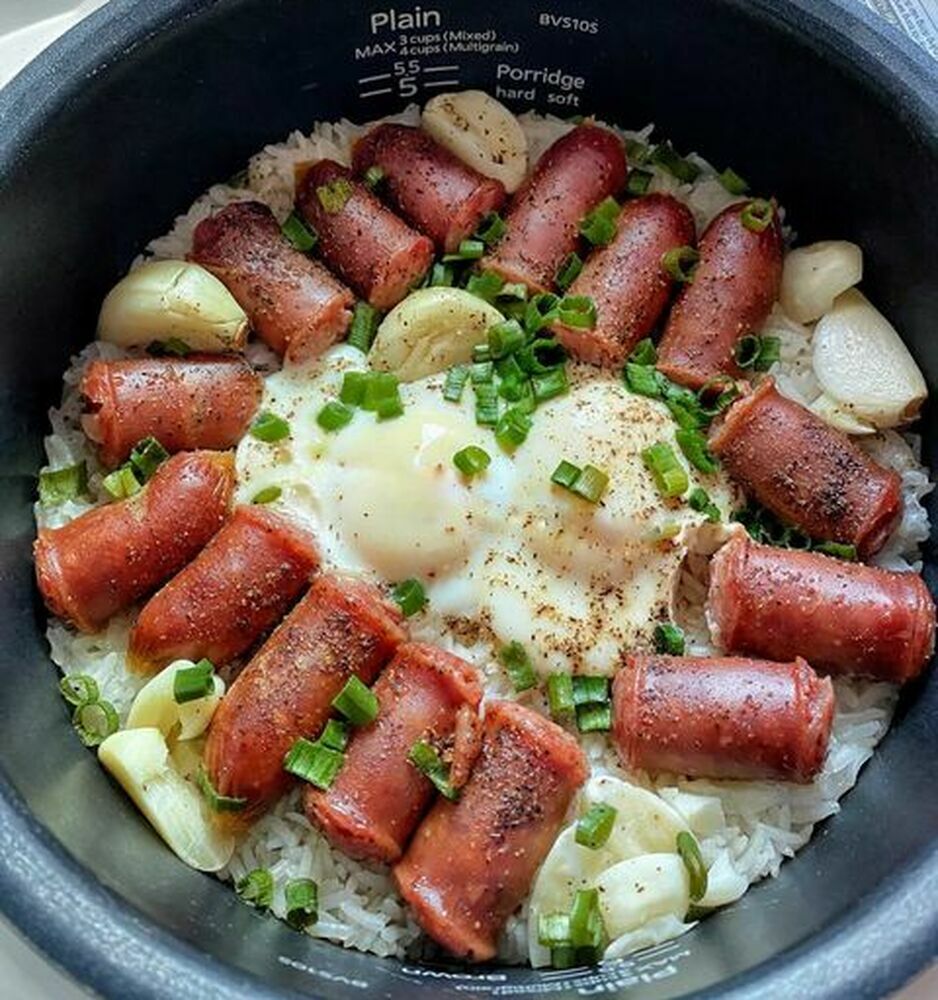
Serving Suggestions
Pair rice with Chinese sausage with a side of steamed vegetables or a light soup to create a balanced and satisfying meal. Garnish with sliced green onions or sesame seeds for an extra touch of flavor.
Sticky Rice with Chinese Sausage
Combine the savory taste of Chinese sausage with sticky rice, mushrooms, and shrimp for a richly flavored dish. This recipe includes steaming the rice and stir-frying with the sausage and other ingredients.
Instant Pot Chinese Sausage Rice
Utilize the convenience of an Instant Pot to prepare this dish, mixing rice with Chinese sausage, mushrooms, and a variety of sauces for a deeply flavored and satisfying meal.
Ingredients Overview
- Rice (Jasmine or sticky rice)
- Chinese sausage (Lap Cheong)
- Onion, ginger, and scallions
- Shiitake mushrooms and dried shrimp (for certain recipes)
- Soy sauce, oyster sauce, and Shaoxing wine for seasoning
Cooking Tips
- Rinse the rice thoroughly before cooking to remove excess starch.
- For a softer texture, steam or boil the Chinese sausage before adding it to the dish.
- When using a rice cooker or Instant Pot, layer the ingredients properly to ensure even cooking.
- Adjust seasoning according to taste preferences, adding more soy sauce or salt as needed.
Nutritional Information
Chinese sausage is known for its high flavor content, adding a rich taste to the rice. However, it\"s also high in fat and sodium, so consider balancing your meal with vegetables or lighter sides.
_HOOK_
Serving Suggestions
Pair rice with Chinese sausage with a side of steamed vegetables or a light soup to create a balanced and satisfying meal. Garnish with sliced green onions or sesame seeds for an extra touch of flavor.
Instant Pot Chinese Sausage Rice
Utilize the convenience of an Instant Pot to prepare this dish, mixing rice with Chinese sausage, mushrooms, and a variety of sauces for a deeply flavored and satisfying meal.
Ingredients Overview
- Rice (Jasmine or sticky rice)
- Chinese sausage (Lap Cheong)
- Onion, ginger, and scallions
- Shiitake mushrooms and dried shrimp (for certain recipes)
- Soy sauce, oyster sauce, and Shaoxing wine for seasoning
Cooking Tips
- Rinse the rice thoroughly before cooking to remove excess starch.
- For a softer texture, steam or boil the Chinese sausage before adding it to the dish.
- When using a rice cooker or Instant Pot, layer the ingredients properly to ensure even cooking.
- Adjust seasoning according to taste preferences, adding more soy sauce or salt as needed.
Nutritional Information
Chinese sausage is known for its high flavor content, adding a rich taste to the rice. However, it\"s also high in fat and sodium, so consider balancing your meal with vegetables or lighter sides.
Serving Suggestions
Pair rice with Chinese sausage with a side of steamed vegetables or a light soup to create a balanced and satisfying meal. Garnish with sliced green onions or sesame seeds for an extra touch of flavor.
Nutritional Information
Chinese sausage is known for its high flavor content, adding a rich taste to the rice. However, it\"s also high in fat and sodium, so consider balancing your meal with vegetables or lighter sides.
_HOOK_
Serving Suggestions
Pair rice with Chinese sausage with a side of steamed vegetables or a light soup to create a balanced and satisfying meal. Garnish with sliced green onions or sesame seeds for an extra touch of flavor.
Serving Suggestions
Pair rice with Chinese sausage with a side of steamed vegetables or a light soup to create a balanced and satisfying meal. Garnish with sliced green onions or sesame seeds for an extra touch of flavor.
Introduction to Chinese Sausage
Chinese sausage, known as Lap Cheong in Cantonese, is a beloved ingredient in Chinese cuisine, cherished for its rich flavors and versatile culinary applications. Made from pork, and sometimes chicken, this sausage is distinctively seasoned with soy sauce, rice wine, and a blend of spices, then air-dried to perfection. Its sweet and savory taste, coupled with a slightly smoky aroma, makes it a unique addition to a variety of dishes, from simple stir-fries to elaborate festive meals.
The process of making Chinese sausage involves marinating the meat in a concoction of soy sauce, sugar, rice wine, and a carefully selected mix of spices, followed by air-drying under specific conditions to achieve its characteristic chewy yet tender texture. This traditional method not only imparts a complex flavor profile but also preserves the sausage, allowing it to be stored for extended periods.
Chinese sausage is incredibly versatile and can be cooked in numerous ways. It is often steamed, stir-fried, or baked and can be added to rice dishes, noodle preparations, and even steamed buns. One of the most popular ways to enjoy it is by cooking it with rice, where the fat from the sausage melts into the grains, infusing them with a deliciously rich flavor.
There are different types of Chinese sausage, each with its unique flavor profile. The most common type is made from pork and fat, known for its sweet and savory taste. Another variety includes liver sausage, which is richer and has a more robust flavor. There\"s also a version made with duck liver, offering a distinctively gamey taste that\"s favored in certain regional cuisines.
When cooking with Chinese sausage, it\"s essential to consider its rich flavor and fat content, which can greatly influence the overall taste of the dish. It\"s commonly sliced thinly and cooked until slightly caramelized, bringing out its depth of flavor. Whether added to a steaming bowl of rice, wrapped in pastry for a savory snack, or incorporated into a hearty stir-fry, Chinese sausage adds a touch of indulgence and complexity to any meal.
In summary, Chinese sausage is not just a food item; it\"s a testament to the rich culinary heritage of China. Its unique preparation method, versatile usage, and delightful taste make it an indispensable ingredient in Chinese cooking, beloved by chefs and home cooks alike.
Health Benefits and Nutritional Info
Chinese sausage, known as \"Lap Cheong,\" is a traditional Chinese delicacy made from pork, fat, and various seasonings. It is often used to enhance the flavor of dishes, including the popular rice with Chinese sausage. Despite its rich taste, it\"s important to consider its health benefits and nutritional content.
- High Protein Content: Chinese sausage is a good source of protein, essential for building and repairing tissues, making it a beneficial addition to a balanced diet.
- Source of Vitamins and Minerals: Depending on the ingredients used, it can provide vitamins such as B12, which is crucial for brain health, and minerals like iron and zinc.
- Energy Boost: The sausage is calorie-dense, providing a quick energy boost. This makes it an excellent option for those requiring high energy intake, especially when paired with rice.
- Considerations for a Healthy Diet: While Chinese sausage offers nutritional benefits, it is also high in fat and sodium. Moderation is key, and it\"s best enjoyed as part of a varied diet that includes plenty of vegetables and grains.
- Low in Carbohydrates: For those monitoring their carbohydrate intake, Chinese sausage is a low-carb option that can add flavor without significantly increasing carb consumption.
Incorporating Chinese sausage into dishes like rice can offer a satisfying meal with the benefit of added protein and energy. However, for those with dietary restrictions or health considerations, it\"s advisable to consume it in moderation and balance it with other nutrient-dense foods.
Traditional Rice with Chinese Sausage Recipes
Delight your taste buds with the savory flavors of traditional rice dishes enhanced by the aromatic Chinese sausage, a staple in Chinese cuisine. These recipes are a testament to the versatility of Chinese sausage, blending perfectly with rice to create dishes that are both comforting and rich in flavor. Whether you\"re seeking a simple, hearty meal or a sophisticated addition to your dining table, these recipes are sure to impress.
Classic Steamed Rice with Chinese Sausage
This classic recipe is a staple in many households, known for its simplicity and the delightful flavors imparted by the Chinese sausage.
- Rinse 2 cups of jasmine or long-grain rice until the water runs clear, and drain.
- Soak the rice in water for about 30 minutes, then drain again.
- Slice 2 Chinese sausages thinly on the diagonal.
- Place the rice in a heatproof dish and add 2 cups of water.
- Top the rice with sliced sausage, spreading them evenly.
- Steam over medium-high heat for 20-25 minutes, until the rice is tender and the sausage is cooked through.
- Optional: Garnish with chopped green onions and serve hot.
Fried Rice with Chinese Sausage and Vegetables
A colorful and nutritious twist on the traditional fried rice, incorporating Chinese sausage for a deeper flavor.
- Ingredients: 2 cups of cooked rice (preferably day-old), 2 Chinese sausages, 1 cup of mixed vegetables (carrots, peas, and corn), 2 eggs, soy sauce, and sesame oil.
- Slice the sausages and fry them in a pan until slightly crispy. Remove and set aside.
- In the same pan, add a little oil and scramble the eggs. Once cooked, set aside with the sausage.
- Add a bit more oil to the pan, then sauté the mixed vegetables until just tender.
- Add the rice, breaking up any clumps. Stir-fry for a few minutes until the rice is heated through.
- Return the sausage and eggs to the pan, mixing well. Season with soy sauce and a dash of sesame oil to taste.
- Serve hot, garnished with sliced green onions or cilantro for an extra pop of flavor.
Both recipes highlight the unique taste of Chinese sausage, making it the star of the dish. Whether steamed or fried, rice with Chinese sausage offers a delicious way to enjoy traditional Chinese flavors with a simple yet satisfying meal.
_HOOK_
Variations and Modern Twists
Rice with Chinese sausage, a traditional comfort food, has seen numerous variations and modern twists that cater to diverse palates and dietary needs. Here are some innovative takes on this classic dish:
- Quinoa or Cauliflower Rice: For a healthier, low-carb alternative, quinoa or cauliflower rice can replace white rice, adding a new texture and boosting the nutritional content.
- Vegan and Vegetarian Options: Vegan versions use plant-based sausages made from ingredients like mushrooms, soy, or seitan, maintaining the dish\"s essence while catering to vegan and vegetarian diets.
- Additional Proteins: Adding other proteins such as shrimp, chicken, or tofu can make the dish more substantial and cater to different dietary preferences.
- International Flavors: Incorporating ingredients like kimchi, curry powder, or teriyaki sauce introduces international flavors, offering a fusion twist to the traditional recipe.
- Different Cooking Methods: While traditionally cooked in a rice cooker or pot, experimenting with baking or stir-frying the ingredients together can introduce new textures and flavors.
- Extra Vegetables: To increase the dish\"s nutritional value, additional vegetables such as bell peppers, peas, or carrots can be added, making it a more balanced meal.
These variations and modern twists not only add diversity to the traditional rice with Chinese sausage but also make it adaptable to different tastes and dietary requirements, ensuring it remains a beloved dish for generations to come.
Choosing the Right Chinese Sausage
When creating dishes with rice and Chinese sausage, selecting the appropriate type of sausage is crucial for achieving the desired flavor and texture. Chinese sausage, known as \"Lap Cheong,\" comes in various types, each offering unique taste profiles that can enhance your dish.
- Sweet Chinese Sausage: This type is commonly made from pork and is seasoned with sugar, salt, and rose water. Its sweet and savory flavors make it a versatile ingredient for many rice dishes.
- Wind-Dried Sausage: These sausages are air-dried and have a firmer texture. They are excellent for adding a chewy texture and a concentrated flavor to your dish.
- Liver Sausage: Made with pork liver, this variety has a richer and deeper flavor. It\"s an acquired taste but can add complexity to your rice.
- Chicken or Duck Sausage: For those looking for a lighter option, these poultry-based sausages offer a leaner alternative with a delicate flavor.
Consider the following when choosing the right Chinese sausage for your dish:
- Flavor Profile: Match the sausage\"s flavor with the other ingredients in your dish. Sweet sausages pair well with vegetables, while liver sausages suit bolder, savory dishes.
- Texture: Think about the texture you want to achieve. For a softer bite, go with sweet or poultry sausages. For something more substantial, choose wind-dried varieties.
- Cooking Method: Some sausages are best steamed, while others can be stir-fried or grilled. Choose one that suits your cooking style and the recipe\"s requirements.
By carefully selecting the right type of Chinese sausage, you can elevate your rice dishes, adding depth and authenticity to the flavors. Whether you prefer something sweet and savory or rich and complex, there\"s a Chinese sausage that\"s perfect for your culinary creations.
Cooking Tips for Perfect Rice
To achieve the perfect texture and flavor when making rice with Chinese sausage, follow these expert tips:
- Rinse the Rice: Start by thoroughly rinsing your rice under cold water until the water runs clear. This removes excess starch and prevents the rice from becoming too sticky.
- Soak the Rice: For even more tender rice, soak it in water for 30 minutes before cooking. Drain it well afterward.
- Proper Rice-to-Water Ratio: Use the correct amount of water to cook the rice. A good rule of thumb is 1 cup of rice to 1.5 cups of water for white rice. Adjustments may be needed based on the rice type.
- Use a Heavy-Bottomed Pot: Cooking rice in a heavy-bottomed pot helps distribute the heat evenly, preventing the rice at the bottom from burning.
- Add Flavor: Infuse the rice with flavor by cooking it in broth instead of water. You can also add a piece of the Chinese sausage into the pot while the rice cooks for an enhanced flavor.
- Let It Simmer: Once the rice comes to a boil, reduce the heat to low, cover, and let it simmer. Avoid lifting the lid, as this can release steam and affect the cooking process.
- Rest After Cooking: After the rice is done, turn off the heat and let it sit covered for 10 minutes. This allows the rice to steam further and become fluffy.
- Fluff and Serve: Fluff the rice with a fork before serving to separate the grains. This is also the perfect time to mix in sliced Chinese sausage that has been pan-fried until crisp.
By following these steps, you\"ll ensure your rice is perfectly cooked, flavorful, and a delightful complement to the savory Chinese sausage.
Pairing Suggestions and Serving Ideas
Rice with Chinese sausage is a versatile dish that can be enjoyed in various ways. To enhance your dining experience, consider the following pairing suggestions and serving ideas:
- Vegetable Stir-fries: Complement the savory flavors of Chinese sausage with a side of green leafy vegetables such as bok choy, spinach, or kale, stir-fried with garlic and a dash of soy sauce.
- Soup Accompaniment: Serve a light, brothy soup on the side, such as a clear vegetable or miso soup, to balance the richness of the sausage.
- Pickled Vegetables: Add a refreshing side with pickled radishes or cucumbers to cleanse the palate and add a crunchy texture contrast.
- Steamed Egg: A soft, steamed egg dish can complement the rice and sausage with its smooth texture and mild flavor, offering a soothing balance.
- Tea Pairing: Enjoy your meal with a pot of jasmine or oolong tea. These teas can help cut through the richness of the dish and aid in digestion.
For those looking to add even more variety, consider incorporating other elements into your meal:
- Enhance with Sauces: Offer soy sauce, oyster sauce, or chili oil on the side for guests to customize the flavor intensity to their liking.
- Additional Protein: While the Chinese sausage provides a meaty component, consider adding tofu or a fried egg on top for extra protein and texture.
- Rice Variations: Experiment with different types of rice such as jasmine, basmati, or brown rice for varied flavors and textures.
Remember, the key to a memorable meal is not just in the main dish but in the combination of flavors, textures, and colors on your plate. Enjoy experimenting with these suggestions to find your perfect pairing!
Storing and Preserving Chinese Sausage
Chinese sausage, known for its rich flavors and versatility, can be a delightful addition to a variety of dishes, including the classic rice with Chinese sausage. Proper storage and preservation are key to maintaining its quality and extending its shelf life. Here\"s how to store and preserve Chinese sausage effectively:
- In the Refrigerator: For short-term storage, keep the Chinese sausage in its original packaging or wrap it tightly in plastic wrap or aluminum foil. Place it in the refrigerator, where it can last for up to two months.
- In the Freezer: For long-term preservation, freezing is the best option. Wrap the sausage tightly in plastic wrap, followed by aluminum foil to prevent freezer burn. Stored in the freezer, Chinese sausage can last up to six months. Remember to thaw it in the refrigerator overnight before using.
- Avoiding Moisture: Moisture is the enemy of Chinese sausage, leading to spoilage. Ensure it\"s well-sealed and dry before storing. If you notice any signs of moisture in the packaging, dry the sausage before wrapping it for storage.
- Room Temperature: Unopened Chinese sausage can be stored at room temperature in a cool, dry place for up to a month. However, once opened, it should be refrigerated to prevent spoilage.
- Check Regularly: Regularly check the sausage for any signs of spoilage, such as an off smell, discoloration, or mold. If any of these signs are present, it\"s best to discard the sausage to avoid health risks.
By following these storage and preservation tips, you can ensure that your Chinese sausage remains fresh and delicious, ready to enhance your next culinary creation.
_HOOK_
Expert Tips for First-Timers
Embarking on the journey of cooking rice with Chinese sausage can be a delightful experience for first-timers. This dish, known for its rich flavors and aromatic appeal, is a staple in Chinese cuisine. Here are some expert tips to help you master this dish:
- Choosing the Right Ingredients: Select high-quality Chinese sausage (Lap Cheong) for the best flavor. Opt for jasmine or long-grain rice for their fragrance and texture.
- Rinsing the Rice: Always rinse your rice thoroughly until the water runs clear to remove excess starch, which can make your dish too sticky.
- Sausage Preparation: Slice the Chinese sausage thinly to ensure it cooks evenly and infuses the rice with its flavors.
- Water Ratio: For perfectly cooked rice, use a 1:1 ratio of rice to water. Adjustments may be necessary depending on the rice type.
- Soaking the Rice: Soak the rice for at least 30 minutes before cooking. This step helps in achieving a fluffier texture.
- Cooking Method: Consider using a rice cooker for consistent results. If cooking stovetop, bring the mixture to a boil, then simmer on low heat until the water is absorbed.
- Resting the Rice: Let the rice sit covered for 10-15 minutes after cooking. This allows the grains to set and become fluffy.
- Garnishing: Enhance the dish with fresh green onions or cilantro for a burst of color and flavor.
- Serving Suggestions: Serve hot as a main dish or a fulfilling side. Pair with vegetables or a light soup for a balanced meal.
With these expert tips, even first-timers can cook rice with Chinese sausage like a pro. Remember, the key to perfecting this dish lies in the details— from the quality of ingredients to the cooking technique. Enjoy the process and the delicious results!
Cultural Significance and History
The dish of rice with Chinese sausage, also known as \"Lap Mei Fan\" in Cantonese, holds a special place in Chinese cuisine and culture. This dish is not only a celebration of flavors but also embodies the rich history and traditions of Chinese culinary arts. The preparation and consumption of rice with Chinese sausage are steeped in cultural significance, reflecting the values of family, heritage, and the passing of seasons.
Historically, Chinese sausage, or \"Lap Cheong\", is a product of ancient preservation techniques. Made from pork, fat, and a mixture of seasonings, the sausages are air-dried and cured, which imparts a unique sweet and savory flavor profile. This method of preservation was essential for storing meat before the advent of modern refrigeration, making it a staple ingredient in Chinese households.
The inclusion of Chinese sausage in rice dishes dates back centuries and is a testament to the Chinese philosophy of balancing flavors and textures. Rice, with its neutral taste, provides the perfect backdrop for the rich and aromatic sausage. This combination not only ensures a delightful eating experience but also symbolizes abundance and prosperity. The dish is particularly popular during the Lunar New Year and other festive occasions, where it is enjoyed as part of celebratory meals.
In many regions across China and in Chinese communities worldwide, rice with Chinese sausage is a comfort food that evokes nostalgia and a sense of home. It is a dish that is passed down through generations, with each family having their own variation. Some might add additional ingredients such as mushrooms, scallions, or even dried shrimp, each adding layers of flavor and texture, making the dish uniquely theirs.
Beyond its delicious taste, rice with Chinese sausage serves as a culinary bridge connecting people to their ancestral roots and traditions. It is a reminder of the importance of preserving cultural heritage through food and the shared experience of cooking and eating together. As such, it continues to be a beloved dish that celebrates the richness of Chinese culinary history and the enduring spirit of its people.
Where to Buy Quality Chinese Sausage
Finding quality Chinese sausage, or Lap Cheong, is key to creating delicious rice dishes with authentic flavor. Here\"s where you can purchase high-quality Chinese sausage:
- Asian Supermarkets: These stores often have a wide selection of Chinese sausages, including different brands and varieties made from pork, chicken, or duck. Look for well-known brands for consistent quality.
- Online Retailers: Websites like Amazon and specialty food shops offer a variety of Chinese sausages that can be delivered directly to your door. This is a convenient option if you don\"t have a local Asian market.
- Local Butcher Shops: Some butcher shops, especially those in areas with a large Chinese community, may offer homemade or artisanal Chinese sausages.
- Specialty Gourmet Stores: These stores sometimes carry imported Chinese sausages that are hard to find elsewhere, offering a premium selection.
When selecting Chinese sausage, consider the following tips:
- Check the Ingredients: Look for sausages made with quality ingredients and avoid those with unnecessary additives.
- Examine the Packaging: Ensure the packaging is intact and the product is well within its expiry date to guarantee freshness.
- Brand Reputation: Opt for brands with positive reviews and recommendations to ensure you\"re getting a product that is trusted and enjoyed by many.
With these tips, you\"ll be able to find the perfect Chinese sausage for your cooking needs, enhancing your dishes with the authentic flavors and textures that make Chinese cuisine so beloved.
READ MORE:
User Reviews and Recommendations
Rice with Chinese sausage is a beloved dish celebrated by many for its delightful combination of flavors and textures. According to numerous user reviews gathered from various culinary websites and forums, this dish stands out for its simplicity, comfort, and the unique taste that Chinese sausage brings to the table.
Why People Love It
- Easy to Prepare: Many appreciate how straightforward it is to make, making it perfect for weeknight dinners.
- Rich Flavor: The Chinese sausage imparts a sweet and savory flavor that enhances the overall taste of the dish.
- Versatile: Users enjoy customizing the dish with additional ingredients like mushrooms, green peas, or scallions to add more depth.
Recommended Variations
- Classic Rice with Chinese Sausage: The traditional recipe, focusing on the sausage, rice, and light seasonings like soy sauce and sesame oil.
- Veggie-Loaded: Adding vegetables like bell peppers and carrots for a colorful and nutritious twist.
- Spicy Kick: For those who enjoy a bit of heat, incorporating chili flakes or fresh chilies can elevate the dish.
User Tips for the Best Experience
- Use high-quality Chinese sausage for the best flavor.
- Pre-soak the rice to ensure it cooks evenly.
- Consider using a rice cooker for perfectly cooked rice without much fuss.
- Don\"t skip the garnish! A sprinkle of chopped green onions or cilantro can add a fresh contrast to the rich flavors.
In summary, rice with Chinese sausage is a dish celebrated for its delightful blend of flavors, ease of preparation, and versatility. Whether you\"re a seasoned cook or new to the kitchen, it\"s a comforting and satisfying meal that\"s sure to please.
Embark on a culinary journey with rice and Chinese sausage, a dish that promises to delight your palate with its rich flavors, easy preparation, and versatile appeal. Perfect for any meal, it\"s a timeless classic that never disappoints.





